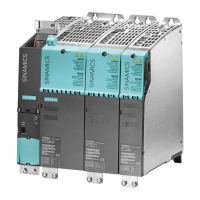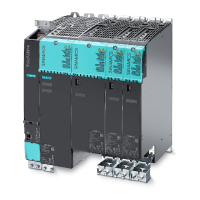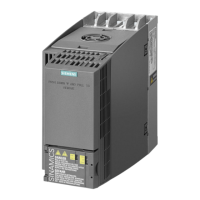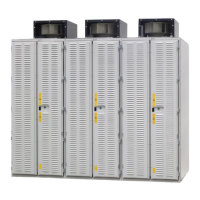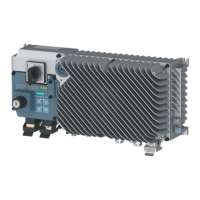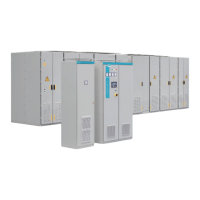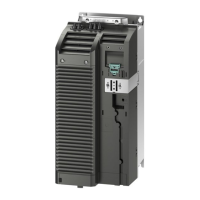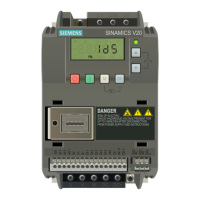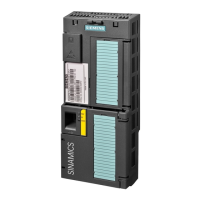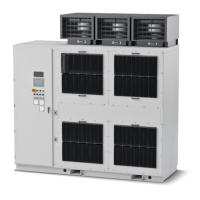Operation
6.7 Control via the operator panel
Drive converter cabinet units
Operating Instructions, 07/07, A5E00288214A
235
Operator input inhibit (factory setting: not active)
● Active: The parameters can still be viewed, but a parameter value cannot be saved
(message: "Note: operator input inhibit active"). The OFF key (red) is enabled. The
LOCAL, REMOTE, ON (green), JOG, CW/CCW, INCREASE, and DECREASE keys are
disabled.
Parameterization inhibit (factory setting: not active)
● Active: Parameters cannot be changed unless a password is entered. The
parameterization process is the same as with the operator input inhibit. If you try and
change parameters, the message "Note: Parameterization inhibit active" is displayed. All
the control keys can, however, still be actuated.
Access level (factory setting: Expert):
The different parameters required for this complex application are filtered so that they can be
displayed as clearly as possible. You select them according to the access level.
An expert level, which must only be used by expert personnel, is required for certain actions.
6.7.8 Faults and alarms
Indicating faults and alarms
If a fault occurs, the drive displays the fault and/or alarm on the operator panel. Faults are
indicated by the red "FAULT" LED and a fault screen is automatically displayed. You can use
the F1 Help function to call up information about the cause of the fault and how to remedy it.
You can use F5 Ack. to acknowledge a stored fault.
Alarms are indicated by means of the yellow "ALARM" LED. The system also displays a note
in the status bar providing information on the cause.
What is a fault?
A fault is a message from the drive indicating an error or other exceptional (unwanted)
status. This could be caused by a fault within the converter or an external fault triggered, for
example, by the winding temperature monitor for the motor. The faults are displayed and can
be reported to a higher-level control system via PROFIBUS. In the factory default setting, the
message "converter fault" is also sent to a relay output. Once you have rectified the cause of
the fault, you have to acknowledge the fault message.
What is an alarm?
An alarm is the response to a fault condition identified by the drive. It does not result in the
drive being switched off and does not have to be acknowledged. Alarms are "self
acknowledging", that is, they are reset automatically when the cause of the alarm has been
eliminated.
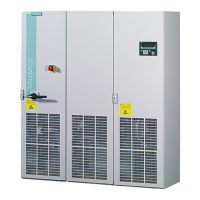
